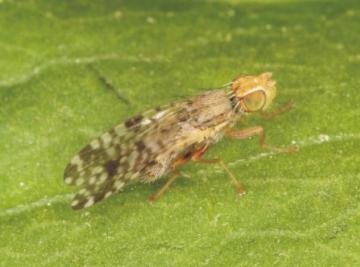Species Account for Dioxyna bidentis
Dioxyna bidentis (Robineau-Desvoidy, 1830)
Diptera: other groups: Tephritidae

Reproduction for study and non-profit use permitted, all other rights reserved.
Taxonomic group: flies (other) (Diptera: other groups) - County data
View time series maps for Dioxyna bidentis
member log-on for taxon report
Status: Notable
Essex RDB: Listed
Images
upload a new image
Species text
This picture-winged fly is a local species whose larvae feed on the flower heads and unripe seeds of the local Tripartite Bur-marigold Bidens tripartita, although it has been collected in areas where Bidens does not occur. Records are widely dispersed in England as far north as Yorkshire and with an old record from Kinrara, Speyside, Scotland (1936), but there are nine post 1960 sites known to Falk (1991a). Habitat preferences are unclear, but records include marshes and wet areas on commons and dunes. Threats include loss of the host plant through either overgrazing, or cessation of grazing with subsequent scrub invasion. Bidens species appear to require ground which is flooded in the winter, but not in the summer, (Falk, op. cit.) so it is essential that water levels facilitate this. References
Habitats
Recorded management for locations with Dioxyna bidentis
Recorded substrate and hydrology for locations with Dioxyna bidentis
Why not join the Club, register and add a new species page
Interpretation of distribution maps



















